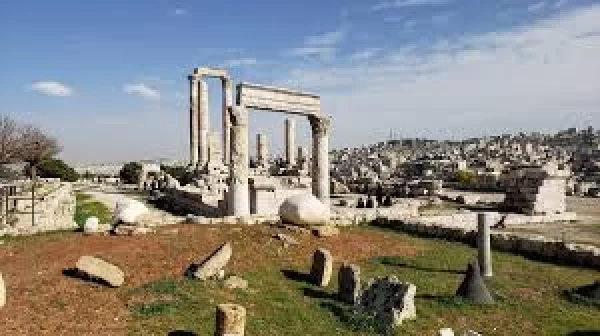
Roman Temple Of Hercules
The Roman Temple of Hercules is one of the oldest heritage and historical buildings in Amman, and remains to this day. It dates back to the second century AD, where it was built between 161 AD - 166 AD, under the supervision of the Roman Emperor Marcus Aurelius.
It is named the Temple of Hercules after the Roman god Hercules, whose mission was to protect and preserve the city. The temple was designed in typical Roman architectural form with the dimensions of 52m in length and 22m in width.
The temple is surrounded by a large portico lined with a sacral (sacred area). It was placed on a large stone platform, specially constructed to be visible from the lower city. Historians suggest that it was built over the ruins of an earlier shrine, which was devoted to the Milcom, the God of the Amorites.
This colossal statue is said to be 13 meters tall, making it at least as tall as the temple. You will likely be standing next to it, and now that it is so close to the temple ruins, you can take a photo of the remains of the statue with the ruins of the temple in the background.
Only the elbow and one hand remain in the ruins of the ancient sculpture representing the strength of the Roman hero, and the other remains of the temple are two complete columns and the remains of four more.
In the Temple of Hercules, sunrise and sunset reveal the entire temple bathed in slanting sunlight, with the shadows of the 9-metre-high columns cast to one side on the ground.














